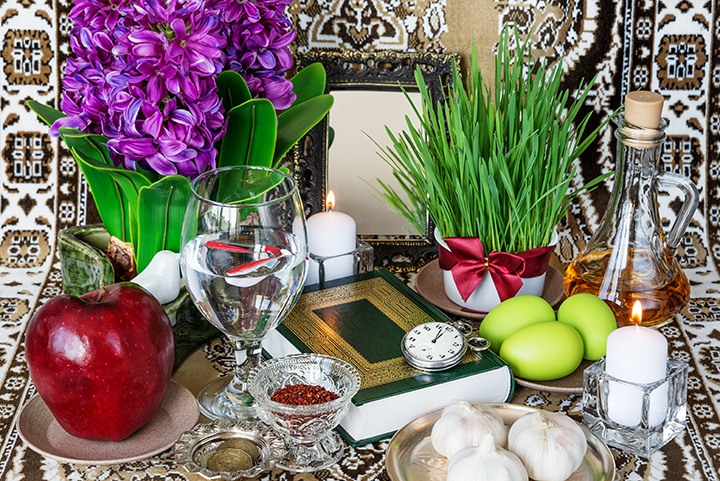As spring approaches, people across the globe eagerly anticipate the arrival of Norooz, the Persian New Year, celebrated by millions worldwide. Norooz, meaning “new day” in Persian, marks the beginning of the Persian calendar and is a time of joy, renewal, and togetherness. Among the myriad of festivities that make up this vibrant celebration, few are as exhilarating and symbolic as the Chaharshanbeh suri, the Haft Sin tradition, and the Sizdeh bedar picnic.
Chaharshanbeh suri, also known as the fire festival, takes place on the eve of the last Wednesday before Norooz. This ancient tradition involves jumping over bonfires while chanting “zardi-ye man az to, sorkhi-ye to az man,” which translates to “may my pallor be yours, your redness be mine.” This ritual is believed to cleanse people of the past year’s misfortunes and purify them for the year ahead. The crackling flames, rhythmic chants, and laughter echoing in the night air create an electrifying atmosphere that binds communities together in a shared spirit of hope and renewal.
As Norooz dawns, families gather to partake in various customs and rituals that symbolize the spirit of the holiday. One such tradition is the setting of the Haft Sin, a ceremonial table adorned with seven symbolic items, each starting with the Persian letter ‘S.’ These items typically include sabzeh (wheat or lentil sprouts), symbolizing rebirth and growth; samanu (sweet pudding), representing affluence; and senjed (dried oleaster fruit), signifying love. The Haft Sin serves as a visual representation of hopes for the new year and is a centerpiece of Norooz celebrations, captivating both young and old with its rich symbolism and vibrant colors.
Beyond the ceremonial rituals, Norooz is a time for reconnecting with loved ones. Families and friends come together to visit relatives, exchange gifts, and share festive meals. This tradition reinforces bonds and fosters a sense of unity and belonging within the community. Whether gathered around the Haft Sin or sharing stories over a sumptuous meal, these moments of connection are cherished and strengthen the ties that bind families and friends together.
As Norooz draws to a close, another beloved tradition awaits: the Sizdeh bedar picnic. On the thirteenth day of Norooz, families venture outdoors to enjoy nature’s beauty and soak in the fresh air. Parks and green spaces come alive with laughter and merriment as people gather for picnics, games, and leisurely walks. Sizdeh bedar symbolizes the end of the holiday period and the return to everyday life, but its joyous atmosphere serves as a fitting conclusion to the festivities, leaving participants with cherished memories to carry them through the year ahead.
In essence, Norooz is more than just a celebration; it’s a testament to the resilience of the human spirit and the enduring power of tradition. From the exhilarating rituals of Chaharshanbeh suri to the heartfelt gatherings of Haft Sin and the carefree picnics of Sizdeh bedar, Norooz embodies the essence of spring—a time of renewal, growth, and boundless possibility. So as the world welcomes another Norooz, let us embrace its joyous spirit and usher in the new year with hope, happiness, and a sense of togetherness. Eid-e Shoma Mobarak! (Happy New Year!)

